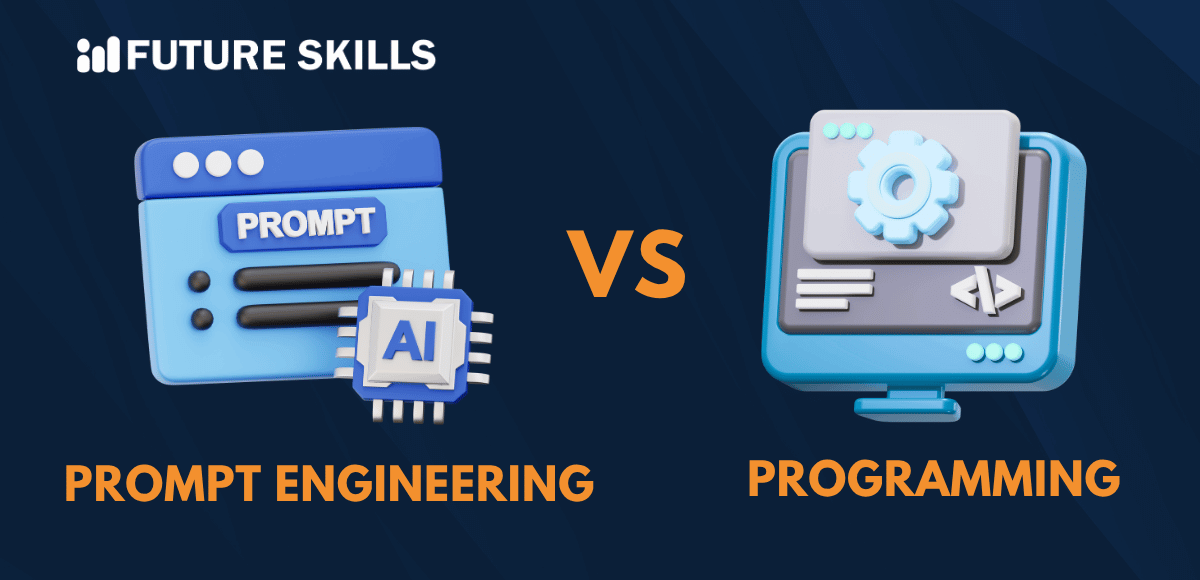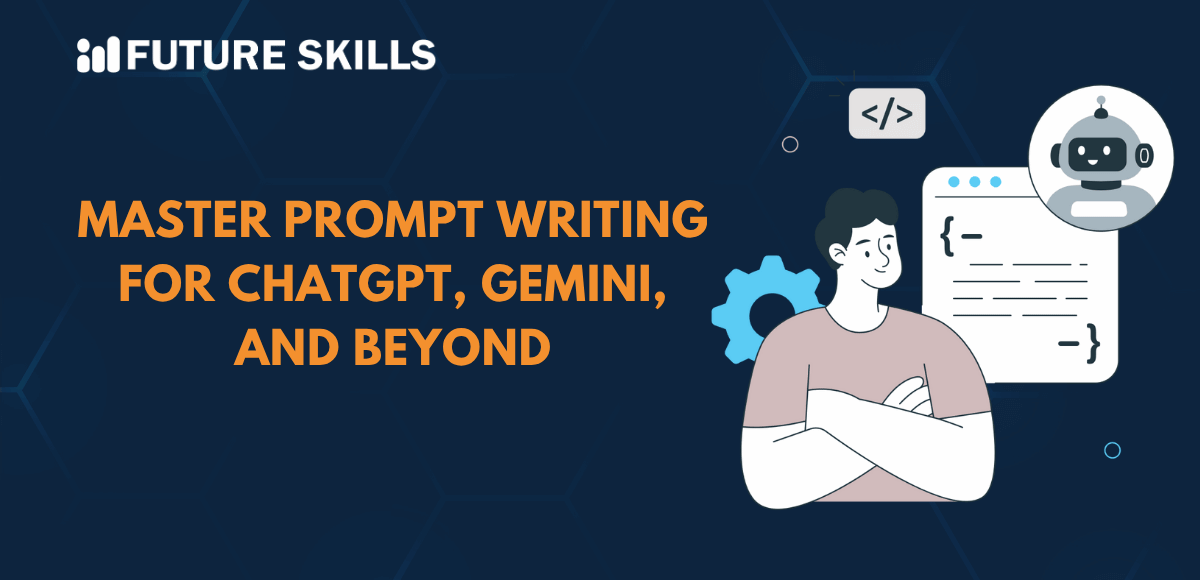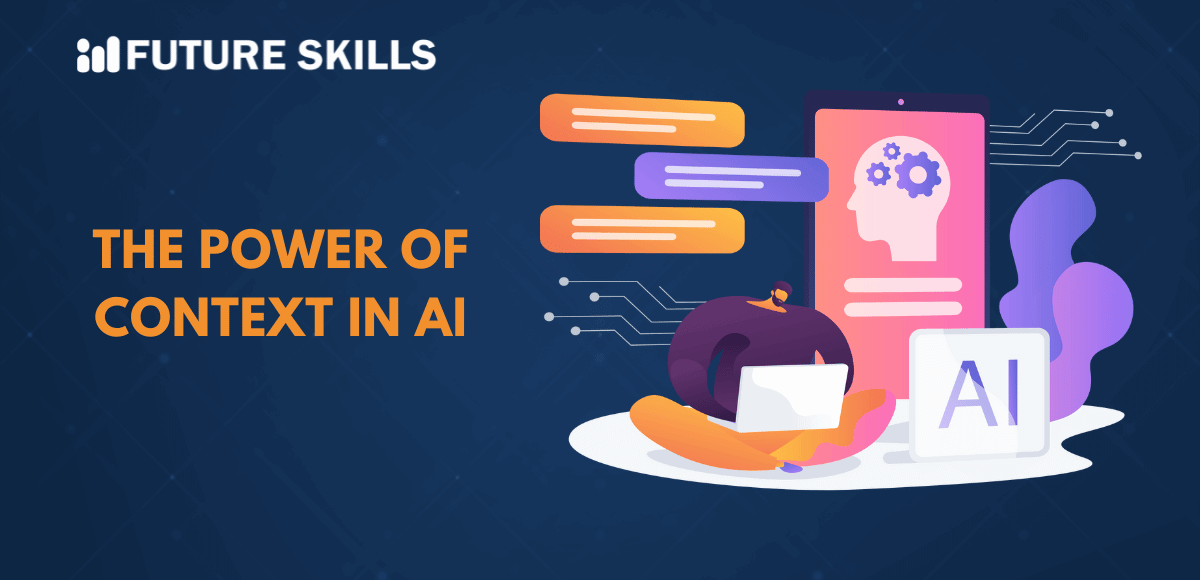The rise of generative AI tools such as ChatGPT and Midjourney has led to a major revolution in technology. The advantages of these tools have helped a wide range of sectors, including marketing, retail, healthcare, and education. As Large language models or LLMs gain prominence, new techniques, such as automatic prompt engineering APE, have been gaining more popularity. You might wonder about the different reasons for which you would need automation of the prompt engineering process.
Prompt engineering is the process of creating instructions that would elicit the best responses from language models. Generative AI models help generate text, images, audio, and video in a few seconds. You can also use the power of generative AI to create websites and software, work on data analysis projects, and design new architectural plans. Let us learn more about the necessity of APE and how it can help you with clear examples.
Become a specialist in prompt engineering with Certified Prompt Engineering Expert (CPEE)™ Program and learn why prompt engineering is one of the best career options today.
Why Do You Need Automatic Prompt Engineering?
The best way to understand the definition of automatic prompt engineering involves learning about the reasons for which you need it in the first place. You would need to understand the importance of prompt engineering first to decipher the necessity of APE. Prompt engineering focuses on creating efficient and precise prompts that help you achieve the best output from generative AI tools that use LLMs.
You would need expertise in LLMs and natural language processing to generate context-specific and clear questions and sentences. It helps in obtaining the most relevant and precise answers from generative AI systems.
Prompt engineering is a valuable skill for generating comprehensive marketing reports, generating computer code, and creating engaging content. The answer to “What is automatic prompt engineering?” draws attention to the complexity of the process. Don’t worry, as you don’t need software development or programming skills to achieve excellence in prompt engineering.
The most important skills required for prompt engineering are an analytical mindset and fluency in language skills. High-quality prompts must include the context that can help AI in understanding the situation alongside instructions to help the generative AI do its job perfectly.
Did you notice one thing about prompt engineering? The journey of creating and designing the perfect prompt requires a lot of patience alongside multiple attempts. Therefore, you would have to go through a long and tedious process as you have to modify the prompt several times to create the perfect prompt. In such cases, automation of the prompt engineering workflow can help in solving such problems.
What is the Importance of APE for Prompt Engineering?
The automation of prompt engineering seems overkill when you are already using generative AI that automatically generates responses to your queries. On the contrary, APE represents a significant leap forward in the ways we look at instruction generation and selection for generative AI systems. The insights on automatic prompt engineer working examples reveal that APE is not just any other AI framework.
It is a visionary intervention required for automation of the prompt creation process. APE looks for potential solutions by using LLMs to generate instructions and refines the interactions between user commands and the AI systems. APE assures the streamlining of task execution process alongside discovering more effective prompts that are better than creatively designed human prompts.
You can find a better impression of automatic prompt engineering APE by identifying the capabilities for dynamic development and evaluation of instructions. It is a process that usually requires extensive trial-and-error accompanied by extensive human input. The working mechanism of APE blends natural language generation and black-box optimization to ensure more effective and intuitive AI interactions.
As a result, APE can have promising implications for app development and computational linguistics. In such cases, the accuracy and efficiency of AI responses serve as prominent highlights, thereby explaining the significance of prompt engineering.
Techniques for automatic prompt creation are not limited to generating high-quality content. The objective of automatic prompt optimization revolves around training LLMS with the help of data extracted from books and the web. APE can help in automatic generation of synthetic data thereby enabling easier and faster training of AI models on bigger datasets.
Automated methods can help in boosting the performance of LLMs by tailoring prompts for specific tasks thereby ensuring more versatility. Speaking of versatility, you can implement automation in prompt engineering with techniques such as rule-based systems, machine learning systems and gradient-based optimization.
Step into the world of AI to learn how AI works and how it is changing the technical landscape in every sector with our accredited Certified AI Professional (CAIP)™ Certification.
What are the Recommended Steps for Implementing APE?
The next crucial highlight in an introduction to automatic prompt engineering refers to the steps involved in implementing APE. Here are the important steps that you must follow to implement APE.
-
Identify the Framework
It is important to understand that APE works on two different levels, such as instruction generation and selection. In the first step, you have to use a large language model to generate different types of instruction samples according to output examples.
-
Instruction Generation
The responses to queries like “What is automatic prompt engineering?” also draw attention to the instruction generation process. In this process, you have to use a pre-trained LLM as the inference model. You have to use your task requirements as input alongside the desired output format to generate different instruction samples.
-
Instruction Selection
The second step in an automated prompt engineer working example focuses on execution of the instruction samples with the target model. You must also review the different outputs according to different performance metrics for identifying the best instructions.
What are the Popular Methods used for Automated Prompt Engineering?
The basic highlights of APE reveal that it is a powerful prompt engineering technique for the future of generative AI. However, it is reasonable to have doubts regarding the use of APE as a trusted technique for the creation of prompts without any prior guidance. In such cases, you can rely on the following frameworks to automate prompt engineering workflows.
-
Automatic Prompt Engineer Framework
The Automatic Prompt Engineer or APE framework helps with the automatic generation of prompts. According to the method, you have to provide input-output pairs to an LLM to generate prompts. The inputs are similar to the ones provided upstream, thereby encouraging the LLM to generate results that are similar to outputs with some variations. With this automatic prompt optimization technique, you would need two LLMs, such as a content generator and a prompt generator.
The APE framework uses the InstructGPT and GPT-3 to generate the prompts. It uses the instruction with a small collection of examples from the instruction induction dataset. In the next step, the prompt generator would respond with a prompt that you should mix with 50 example inputs to use for the content generator.
-
OPRO
OPRO is another example of a program that helps AI in choosing the best prompt. A team of Google DeepMind researchers introduced the OPRO program in September 2023. The program allows different LLMs to try different prompts before they find the suitable choice. It is the most powerful tool for automatic prompt engineering as it offers an easier alternative to automation of the iterative process.
Researchers also have to rely on natural language for describing the optimization process without depending on programming. As a result, the AI can adapt continuously to the changing optimization requests for different tasks.
In the next step, researchers provide instructions to the LLM for the iterative generation of new solutions on the basis of problem description and sample solutions. It is also important to note that the meta-prompt algorithm is the core element of the OPRO program. The algorithm helps in reviewing previous prompts and evaluates their success in the resolution of a specific problem. Subsequently, the algorithm creates multiple prompts and uses them in different scenarios to find the ideal pick. The meta-prompt works like a person typing different variations of prompts before finding the effective choice.
What are the Practical Uses of APE?
You can rely on automatic prompt engineering APE as a reliable tool for different tasks intended for generative AI. The automation of prompt engineering can help identify rhyming words. For example, APE can work on the generation of prompts that seem irrational, albeit with the capability of generating the desired outcome with reliability.
APE can also help in creating prompts that can optimize LLMs for generating honest responses. Furthermore, APE can also discover efficient prompts for the translation of language. It is important to remember that most of the practical uses of APE revolve around its ability to identify intuitive pathways to achieve task-specific goals.
Land your dream job with our comprehensive Certified ChatGPT Professional (CCGP)™ course. Grab this opportunity and become a ChatGPT expert in no time.
Final Words
The automation of prompt engineering is a massive leap for the growth of the AI landscape. Prompts are useful for extracting the right responses from generative AI systems. However, you must note that the process of creating prompts is complex and involves multiple iterative steps. Therefore, automatic prompt engineering helps in reducing the resource-intensive tasks involved in creating effective prompts.
APE is a marker of innovation in the domain of AI by blending the processes of instruction generation and selection. As the AI landscape moves closer towards the era of intelligent machines, APE would play a crucial role in shaping the future of AI. Learn more about the fundamentals of prompt engineering and discover how APE framework can generate effective prompts right now.






